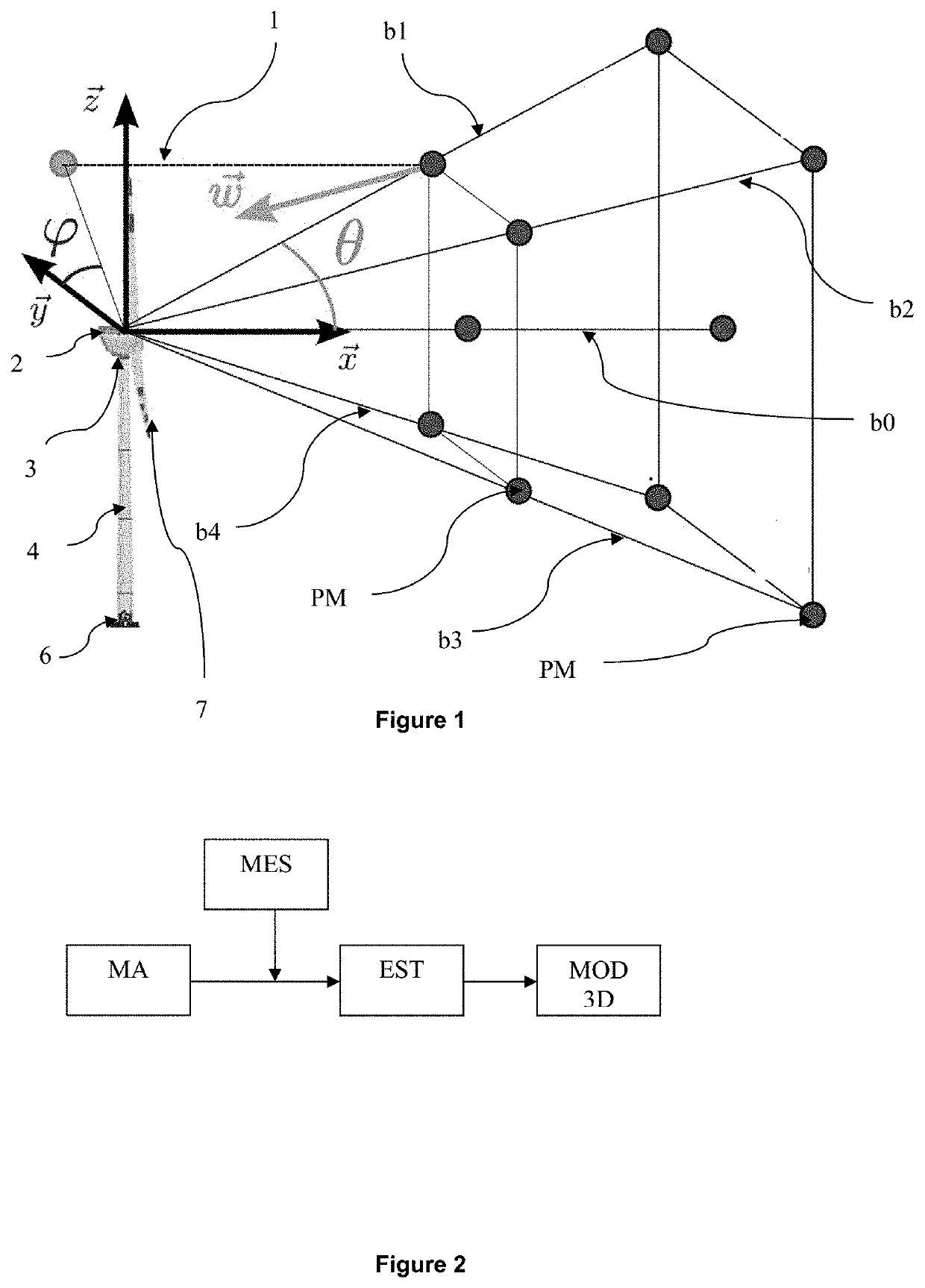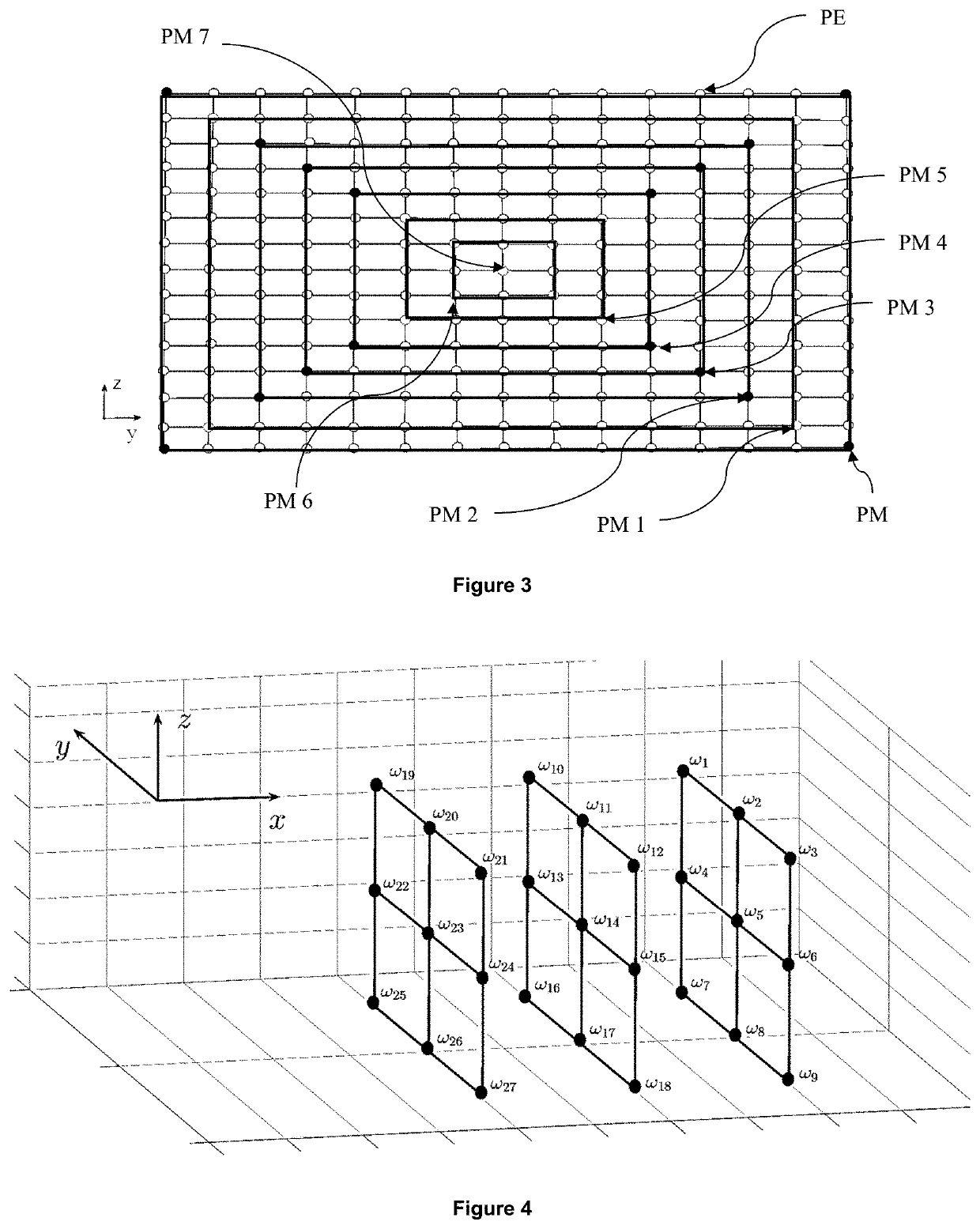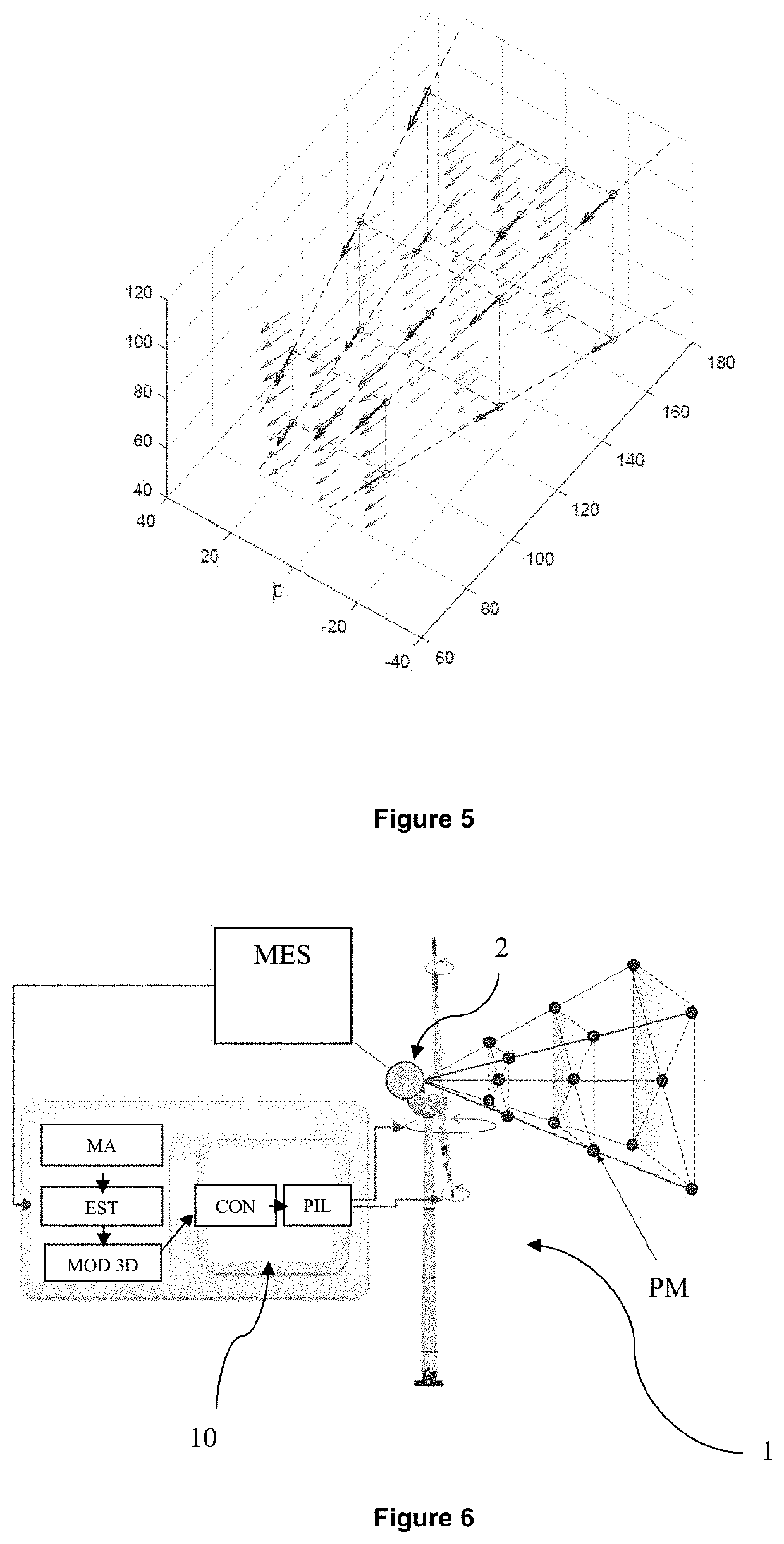Method for acquiring and modelling an incident wind field by means of a lidar sensor
a lidar sensor and incident wind field technology, applied in the field of lidar (light detection and ranging) sensors, can solve the problems of unrealistic, exploitable for real-time applications, and assumption that is neither representative nor realistic, and achieve reliable and accurate measurements.
- Summary
- Abstract
- Description
- Claims
- Application Information
AI Technical Summary
Benefits of technology
Problems solved by technology
Method used
Image
Examples
Embodiment Construction
[0058]Notations
[0059]The following notations are used in the description hereafter:[0060]x, y, z: directions of the three-dimensional coordinate system, with z the vertical axis and x the principal direction of the wind,[0061]θ and φ: orientation angles of said LiDAR sensor. These angles are described in FIG. 1: angle θ is the angle formed by the projection of the measurement angle of the LiDAR onto the plane (y, z) and φ is the angle formed by the projection of the measurement axis of the LiDAR onto a plane consisting of axis x and the projection of the measurement axis of the LiDAR onto plane (y, z),[0062]m(t): measurement of the LiDAR sensor at a measurement point,[0063]vj,x(k), vj,z(k), vj,z(k): projections of the wind speed onto x, y, z,[0064]ω: ordered vector comprised of all the components of the wind speed at the points in space where the wind is estimated on axes x, y and z of the three-dimensional coordinate system,[0065]{circumflex over (ω)}(t): estimation of ω(t) at the ...
PUM
 Login to View More
Login to View More Abstract
Description
Claims
Application Information
 Login to View More
Login to View More - R&D
- Intellectual Property
- Life Sciences
- Materials
- Tech Scout
- Unparalleled Data Quality
- Higher Quality Content
- 60% Fewer Hallucinations
Browse by: Latest US Patents, China's latest patents, Technical Efficacy Thesaurus, Application Domain, Technology Topic, Popular Technical Reports.
© 2025 PatSnap. All rights reserved.Legal|Privacy policy|Modern Slavery Act Transparency Statement|Sitemap|About US| Contact US: help@patsnap.com



